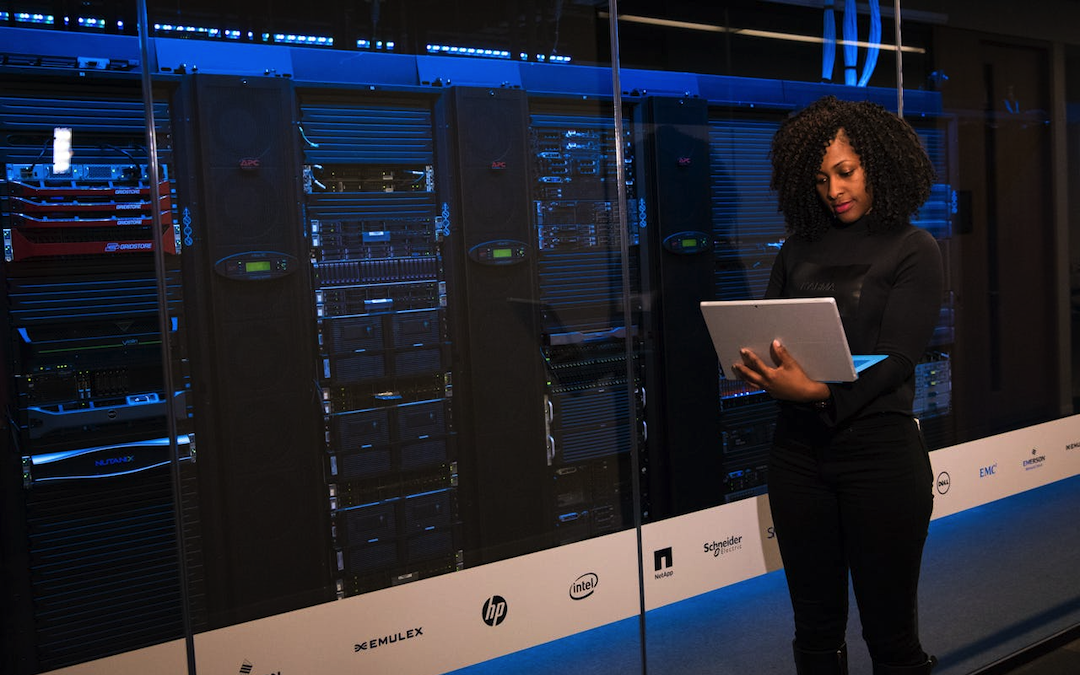
Few customers are busy adding products to their baskets on your online store when they come to check out, and the site crashes. They get frustrated and leave to shop elsewhere. This scenario is more common than you think.
According to a Forrester research estimate, in 2023, 89% of customers will abandon a website following a poor experience. That indicates how critical it is to keep your website up and running.
The more complex the e-commerce systems, the more difficult it is to optimize performance. Synthetic monitoring and observability will arm you with two essential tools to manage and improve your site.
Synthetic monitoring enables users to emulate end-user actions to catch issues before they occur in the actual environment. Observability gives a high-level view of system health. Together, these technologies will ensure smoothness on your website, thus improving the user experience.
Let's start improving your online store's performance.
What is Synthetic Monitoring and Its Core Components

Synthetic monitoring emulates activities that real users usually conduct with your app or web page to benchmark performance. It uses scripts to reproduce user activity and spot and fix problems before reaching the live users. The main elements are automated scripts, checkpoints, and alarms over critical metrics such as response speed, error rates, and availability.
Differentiating Synthetic Monitoring from Real User Monitoring (RUM)
You must understand the distinctions between synthetic monitoring and Real User Monitoring (RUM) to get the most significant outcomes from your monitoring approach. Both are necessary, yet they perform distinct functions and provide distinctive perspectives.
| Aspect | Synthetic Monitoring | Real User Monitoring (RUM) |
|---|---|---|
| Definition | Simulates user interactions to test website or application performance proactively. | Captures data from actual user interactions as they occur. |
| Primary Use | Identifying and resolving issues before they impact real users. | Gaining insights based on actual user behavior and experiences. |
| Data Source | Pre-scripted actions that mimic user behavior. | Actual interactions and experiences of real users on the site. |
| Metrics Monitored | Response time, error rates, availability, and other performance indicators under controlled conditions. | Load times, user engagement, error occurrences, and other metrics reflecting real-world use. |
| Frequency of Monitoring | Continuous and scheduled tests at regular intervals, regardless of actual user activity. | Real-time data collection whenever users interact with the site. |
| Advantages | Proactively detects issues, allows testing under various scenarios, and helps set performance benchmarks. | It provides an accurate picture of user experience, highlights problems as they occur, and captures a wide range of user behaviors and interactions. |
Key Metrics Measured by Synthetic Monitoring
Synthetic monitoring focuses on several important metrics:
- Response Time: How quickly your system responds to user actions.
- Error Rates: The number of errors encountered during simulated interactions.
- Availability: Ensuring your site is always accessible and operational.
Benefits of Synthetic Monitoring for E-commerce
For e-commerce platforms, synthetic monitoring offers numerous advantages:
- Proactive Issue Detection: Find and fix problems before they affect real users.
- Performance Optimization: Continuously monitor and improve critical functions to ensure a smooth user experience.
- Baseline Metrics: Set performance benchmarks to track improvements over time.
- Consistent Testing: Regularly scheduled tests ensure your site performs well at different times and under various conditions.
Using Synthetic Monitoring for E-commerce Success
To realize the total value of synthetic monitoring, you must customize it according to your needs and objectives.
Identify the Critical User Journeys You Will Monitor Synthetic
Begin to outline the most imperative user journeys occurring on your website. Typically, this involves product search, checkout procedures, and account management tasks. This will ensure that the most significant parts of your user experience are optimized.
Write Comprehensive Test Scenarios
Prepare broad test scenarios that cover all the functionalities. For example, a checkout scenario should include adding items to the basket, applying discounts, selecting delivery options, and making payments. The detailed approach allows the discovery of potential issues at all levels.
Set up Baseline and Threshold of Performance
Establish a performance baseline for critical metrics such as response time and error rate. Set up threshold-based notifications to alert you when those thresholds are exceeded. Review them periodically to ensure they are still related to your performance goals.
Correlating Synthetic Monitoring Data with RUM Insights
Merge synthetic monitoring data with RUM insights to get the complete picture of system performance. While synthetic monitoring may supply warnings for possible difficulties, RUM shows how actual users are affected. This combinatorial approach can help you fix issues that have the maximum impact.
Observability: A Holistic Approach to User Experience
After exploring how synthetic monitoring might power your e-commerce performance, the next step is incorporating observability. By combining these methods, you'll better understand your system's health and performance, allowing you to handle problems more precisely.
Observability extends beyond mere monitoring. It entails determining your system's internal status based on the data it produces. In e-commerce, observability is critical for determining the core causes of performance issues and improving user experiences.
Synthetic Monitoring Combined with Other Observability Tools
Improve your observability strategy by combining synthetic monitoring with logs, metrics, and traces to provide an end-to-end system health perspective and find the root cause.
How Observability Helps Pinpoint the Root Cause of Performance Issues
These tools let one probe specific problems and track down the roots of what has gone wrong. For example, if synthetic monitoring finds slow response times, traces might show where the slowdown happens in this chain, while logs will add more information about it.
How Observability Can Help Ensure the Best User Experience
Observability allows actionable insights that help maintain a high level of user experience. It makes issues proactive and performance-improving and assures a frictionless user journey. You can make informed decisions that boost user satisfaction by continuously monitoring and analyzing data.
Best Practices for Implementing Synthetic Monitoring and Observability
Now that you've covered the basics, let's look at some best practices for using these technologies efficiently.
Integrating Synthetic Monitoring into the CI/CD Pipeline
Incorporate synthetic monitoring into your Continuous Integration/Continuous Deployment (CI/CD) process to detect problems early. Automated tests assist in guaranteeing that new code deployments do not cause performance issues while keeping a high level of user experience.
Enhancing Anomaly Detection
Use advanced analytics and pattern recognition to improve anomaly detection. These tools can analyze enormous volumes of data to detect strange trends and notify you of possible problems before they worsen, ensuring your site remains trustworthy and responsive.
Optimizing Synthetic Monitoring Costs and Resources
Control costs by proactively scheduling synthetic testing and focusing on essential user experiences. Prioritize tests that provide the most relevant insights into the user experience, ensuring that resources are used efficiently.
Building a Culture of Performance Monitoring
Develop a culture that appreciates performance monitoring. Encourage collaboration among development, operations, and business teams to ensure that everyone enjoys the value of providing excellent user experiences. Regular training and clear communication can foster this culture.
Case Studies and Real-World Examples
To illustrate the real-world benefits of synthetic monitoring and observability, let's look at some successful implementations.
Hotplate: Optimizing Performance and User Experience
Hotplate is an innovative e-commerce platform that delivers a seamless and efficient user experience. They faced challenges maintaining site performance during peak traffic times and ensuring a consistent user experience across different devices and regions.
Challenges
- Inconsistent load times during high-traffic periods.
- Difficulty in identifying and resolving performance bottlenecks.
- Need for real-time monitoring and quick issue resolution.
Solutions
Hotplate implemented an end-to-end observability platform, integrating synthetic and accurate user monitoring (RUM). This allowed Hotplate to simulate user interactions, identify potential issues proactively, and correlate synthetic data with genuine user experiences.
Results
- By identifying bottlenecks, Hotplate significantly reduced load times across the platform.
- Consistent performance during peak traffic improved user satisfaction and reduced cart abandonment rates.
- Real-time monitoring enabled rapid detection and resolution of issues, maintaining site reliability.
Trademarkia: Ensuring Reliability and Scalability
Trademarkia is a leading e-commerce platform specializing in trademark registration services. As it expanded its services, it required a robust monitoring solution to ensure its site remained reliable and scalable.
Challenges
- Maintaining uptime during rapid expansion.
- Ensuring scalability without compromising performance.
- Real-time visibility into system health and user interactions.
Solutions
Trademarkia implemented a comprehensive observability solution, combining synthetic monitoring with advanced analytics. This approach provided Trademarkia with real-time insights into their system's performance and scalability.
Results
- Continuous monitoring and proactive issue detection ensured the high availability of the platform.
- The tools allowed Trademarkia to scale efficiently, accommodating growing user demand without performance degradation.
- Comprehensive insights into system health helped Trademarkia maintain optimal performance.
Revenium: Driving Business Outcomes with Proactive Monitoring
Selenium is an e-commerce site that delivers a smooth and efficient shopping experience. They needed a solution to monitor their platform and proactively ensure a seamless user experience.
Challenges
- Ensuring consistent performance during promotional events.
- Proactively detecting and resolving issues.
- Gaining comprehensive insights into user behavior and system performance.
Solutions
Revenium deployed an observability platform, integrating synthetic monitoring with real user insights. Revenium could simulate various user scenarios and proactively manage its platform's performance.
Results
- Monitoring ensured Revenium maintained high performance even during peak traffic times.
- The ability to detect and address issues before they impacted users improved overall reliability.
- Detailed insights into user behavior and system performance helped Revenium make data-driven decisions to enhance user experience.
Conclusion
Synthetic monitoring and observability are more than just technical practices. They are strategic measures that help you stay ahead of the competition. They assist you in addressing issues before they affect users, optimizing performance, and ensuring your consumers have a positive experience.
When you invest in these tools, you are ensuring your customers' satisfaction and loyalty. Synthetic monitoring allows you to detect problems early, while observability provides a comprehensive picture of your system's health. Together, they form a solid foundation for continued high performance and dependability.
Consider synthetic monitoring and observability as crucial components of your plan. They can help you deliver a faultless customer experience, establish trust, and drive development.
Begin implementing these principles today and watch your e-commerce platform thrive, offering outstanding experiences that keep customers returning.
Share this post
Leave a comment
All comments are moderated. Spammy and bot submitted comments are deleted. Please submit the comments that are helpful to others, and we'll approve your comments. A comment that includes outbound link will only be approved if the content is relevant to the topic, and has some value to our readers.


Comments (0)
No comment